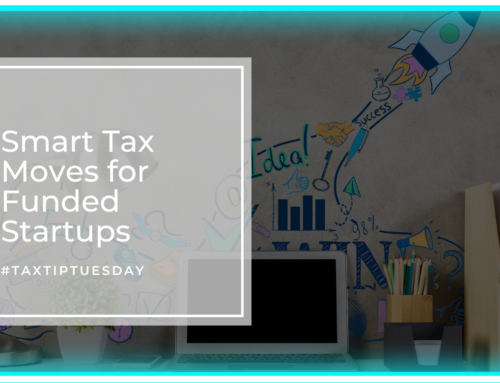Hi, I’m Bette Hochberger, CPA, CGMA. On today’s Tax Tip Tuesday, I will discuss how and why to file taxes for a previous year. Filing and paying taxes may not be thrilling, but ignoring them leads to costly IRS penalties and interest. So, if you want to learn more about this topic, keep reading.
If you’re feeling anxious about filing the previous year’s taxes, don’t fret! Getting caught up may not be as overwhelming as it seems. The first and often toughest step is simply taking the jump, and I’m here to guide you through it.
How Do I File a Previous Year’s Taxes?
To keep it short, filing a previous year’s return is similar to filing an on-time return, but with a few key differences. Here are the steps you will need to take:
Step 1: Gather Your Documents
Before you get started, make sure you gather all the necessary documents and records pertaining to the specific tax year. This preparation will set you up for a smooth and efficient process ahead. These documents may include copies of your last filed return, Employer Identification Number or Social Security number, and financial statements.
In case you are missing important information like W-2s, 1099s, or other tax forms, there’s a solution. You can request a wage and income transcript from the IRS. This transcript will provide you with a detailed overview of all the information reported to the IRS on your behalf for that specific tax year.
Step 2: Complete the Right Tax Forms
It’s important to note that IRS forms vary from year to year, which means you must use the appropriate forms for the specific tax year you’re filing for. If you opt to file your return using online tax software, double-check that you select the correct year within the software.
If you’re filing without the assistance of software, you can conveniently download prior-year forms and instructions for completing them from the official IRS website.
Feeling uncertain about completing the forms independently? You can always seek the expertise of a professional tax preparer who can guide you through the process.
Step 3: Mail or Electronically File Your Completed Return
Using online tax software or a tax professional, you can electronically file a late tax return. The IRS’s Modernized e-File system allows authorized providers to file returns for the current year and two previous years. Note that e-filing is not available during the IRS’s annual maintenance period from late November to mid-January.
If e-filing is not an option for back tax returns, you will need to mail them to the IRS. Simply print out the forms and send them to the address specified in the instructions provided with the forms. Mailing addresses may change, so get the correct address from the instructions for the relevant tax year.
Step 4: Pay the Tax Due or Get Your Tax Refund
To settle the taxes you owe, including penalties and interest, you have several payment options available. You can utilize the Electronic Federal Tax Payment System, IRS Direct Pay, or mail a check along with your return. If paying the full balance is a financial challenge, you can request an IRS payment plan to manage your payments.
If you anticipate a refund instead of owing taxes, filing your return as soon as possible is advisable. Generally, you have a three-year timeframe from the original due date of your return to file and claim your refund. If you file after this three-year window has passed, the IRS will not issue a refund or apply any overpayments to subsequent tax years.
As long as you file within that timeframe, the IRS will issue your refund via check or direct deposit. Direct deposit is the quickest method to receive your refund. You can also request the IRS to apply your refund as a credit in the following tax year if you expect to owe.
Why Do I Need to File Taxes From Previous Years?
Filing back taxes is not a matter of choice for the majority of individuals; it is a legal requirement. While there are certain cases where individuals may be exempt from filing tax returns due to insufficient income, the majority of people are obligated to file. If you are unsure about your filing obligations, you can use the IRS’s tool, “Do I Need to File a Tax Return?“.
On top of this, you may need to get caught up on your tax filing obligations for several other reasons. These include limiting IRS penalties and interest, getting approved for a loan, avoiding tax levies and liens, and more.
If you didn’t file any previous year’s tax return, schedule a meeting with me, and I’d be happy to help out.
I hope you learned something new today. As always, stay safe, and I will see you next time.







